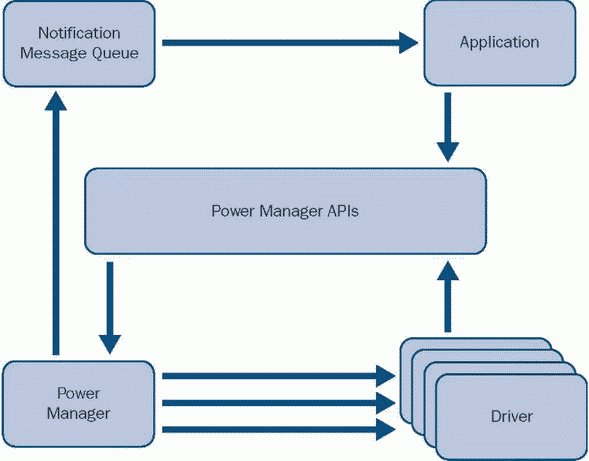Книга: Microsoft Windows Embedded CE 6.0 Exam Preparation Kit
Power Manager Components and Architecture
Power Manager Components and Architecture
Power Manager exposes a notification interface, an application interface, and a device interface according to its tasks. The notification interface enables applications to receive information about power management events, such as when the system state or a device power state changes. In response to these events, power management-enabled applications use the application interface to interact with Power Manager to communicate their power management requirements or change the system power state. The device interface, on the other hand, provides a mechanism to control the power level of device drivers. Power Manager can set device power states separately from the system power state. Similar to applications, device drivers may use the driver interface to communicate their power requirements back to Power Manager. The important point is that Power Manager and the Power Manager APIs centralize power management on Windows Embedded CE, as illustrated in Figure 3-7.

Figure 3-7 Power Manager and power management interaction
- 8.1.2. Device Driver Architecture
- Power Manager Source Code
- Разработка приложений баз данных InterBase на Borland Delphi
- Open Source Insight and Discussion
- Introduction to Microprocessors and Microcontrollers
- Chapter 6. Traversing of tables and chains
- Chapter 8. Saving and restoring large rule-sets
- Chapter 11. Iptables targets and jumps
- Chapter 5 Installing and Configuring VirtualCenter 2.0
- Chapter 16. Commercial products based on Linux, iptables and netfilter
- Appendix A. Detailed explanations of special commands
- Appendix B. Common problems and questions




